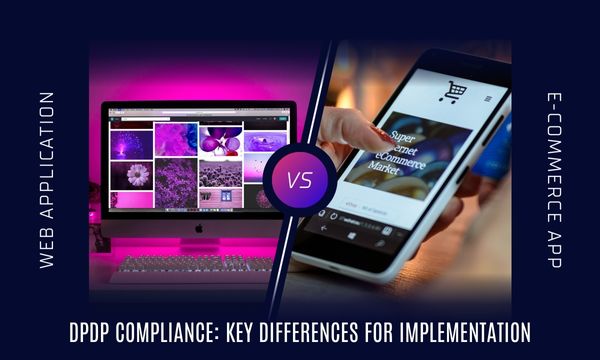
In today’s highly regulated business landscape, organizations across industries—especially in healthcare, government, and other critical sectors—must adhere to strict cybersecurity standards. Two of the most widely recognized frameworks are ISO 27001 and the Center for Internet Security (CIS) Controls. Both play a pivotal role in building and maintaining a robust cybersecurity posture, but compliance with these standards is more than a box-ticking exercise. It's essential to align penetration testing (pentesting), Vulnerability Assessment and Penetration Testing (VAPT), and Red Teaming services with these requirements to safeguard sensitive data and meet regulatory expectations.
In this blog, we will break down ISO 27001 and CIS Controls, explain their importance, and explore how security testing services like pentesting and Red Team exercises can help organizations comply with these frameworks.
Understanding ISO 27001 and CIS Controls
ISO 27001: An International Standard for Information Security
ISO 27001 is an international standard for implementing and maintaining an Information Security Management System (ISMS). It provides a risk-based approach to information security, focusing on:
* Identifying and managing risks: Organizations must assess risks and implement measures to mitigate them.
* Implementing security controls: ISO 27001 includes a set of controls (Annex A) to safeguard data confidentiality, integrity, and availability.
* Continuous improvement: Organizations must regularly review and improve their ISMS to stay aligned with evolving threats and business changes.
CIS Controls: Best Practices for Cyber Defense
The CIS Controls are a set of prioritized actions and best practices designed to help organizations defend against common cyber threats. The CIS Controls are grouped into three categories:
* Basic Controls: Foundational controls that all organizations should implement, such as inventory management and secure configurations.
* Foundational Controls: Actions that strengthen the defence, including malware defences and email security.
* Organizational Controls: Higher-level actions like incident response and penetration testing.
Adopting CIS Controls helps organizations improve their security posture, manage risks, and align with broader compliance frameworks like ISO 27001.
Aligning Penetration Testing and VAPT with Compliance Requirements
In highly regulated industries like healthcare and government, cybersecurity testing plays a crucial role in meeting compliance mandates. Here’s how pentesting and VAPT services can support compliance with ISO 27001 and CIS Controls:
1. Identifying and Remediating Vulnerabilities (ISO 27001 Clause 6.1.2, CIS Control 7)
Both ISO 27001 and the CIS Controls require organizations to identify vulnerabilities in their systems and address them. Regular Vulnerability Assessment and Penetration Testing (VAPT) helps uncover weaknesses in an organization’s infrastructure, applications, and networks. This aligns with ISO 27001’s risk management approach (Clause 6.1.2), which mandates regular risk assessments and remediation.
By simulating real-world attacks, pentesting helps organizations identify exploitable vulnerabilities and prioritize remediation based on risk. This not only strengthens security but also ensures compliance with the proactive risk management principles outlined in both frameworks.
2. Testing Security Controls (ISO 27001 Annex A.12, CIS Control 20)
Both ISO 27001 and CIS Controls emphasize the importance of monitoring and testing security controls to ensure they are effective. Pentesting and VAPT play a critical role in verifying that the controls implemented to protect sensitive data are working as intended.
For example, ISO 27001’s Annex A.12.6.1 specifically mentions the need to review information security controls regularly, and the CIS Controls (Control 20) highlight the importance of regular penetration testing to validate the strength of your defences. Regular tests ensure that even as new vulnerabilities emerge, security controls remain robust and up-to-date.
3. Incident Response and Continuous Improvement (ISO 27001 Clause 16, CIS Control 19)
ISO 27001 and CIS Controls both stress the importance of incident response and ongoing improvement. Pentesting not only identifies vulnerabilities but also tests an organization’s incident response plan. This aligns with ISO 27001 Clause 16, which requires organizations to establish procedures to handle security incidents.
Furthermore, conducting regular tests as outlined in CIS Control 19 helps organizations gauge their ability to detect and respond to threats. Pentesting exercises provide valuable insights into an organization's resilience, ensuring that any weaknesses in incident response are addressed proactively.
How Red Team Testing Meets Regulatory Expectations?
Red Team testing goes a step further by simulating the tactics, techniques, and procedures used by advanced threat actors, such as Advanced Persistent Threats (APTs). Here's how Red Team exercises can ensure organizations are prepared for the toughest regulatory scrutiny:
1. Simulating Real-World Attacks for Continuous Compliance (ISO 27001 Clause 9, CIS Control 18)
ISO 27001 Clause 9 requires organizations to monitor and measure the effectiveness of their ISMS, while CIS Control 18 focuses on threat hunting and incident detection. Red Team testing provides a rigorous and realistic assessment of an organization’s defences by simulating real-world attack scenarios, including phishing campaigns, lateral movement within networks, and data exfiltration attempts.
This type of testing ensures compliance with the continuous monitoring and threat detection aspects of ISO 27001 and the CIS Controls, providing actionable insights to improve security defences.
2. Strengthening Response to APTs (ISO 27001 Annex A.16, CIS Control 7)
For industries handling highly sensitive information—such as government agencies and healthcare providers—APTs pose a significant threat. Red Team testing helps organizations prepare for these advanced attacks by simulating the behaviour of skilled attackers over a prolonged period.
This aligns with Annex A.16 of ISO 27001, which focuses on managing information security incidents and improvements, and with CIS Control 7, which emphasizes the need to implement continuous vulnerability management. Red Team exercises test an organization’s capacity to detect, respond, and recover from advanced threats, ensuring that incident response plans are capable of handling sophisticated breaches.
Conclusion: Achieving Compliance with Proactive Security Testing
ISO 27001 and CIS Controls provide a strong foundation for securing sensitive data in regulated industries, but compliance goes beyond paperwork. Organizations must engage in proactive cybersecurity testing to align with these frameworks effectively.
By integrating penetration testing, VAPT services, and Red Team exercises into your security program, you can ensure compliance with ISO 27001 and CIS Controls, while also safeguarding your organization against today’s advanced cyber threats.
Is your organization ready for a compliance audit? Contact us today to learn how our security testing services can help align your organization with ISO 27001, CIS Controls, and other critical cybersecurity frameworks.



